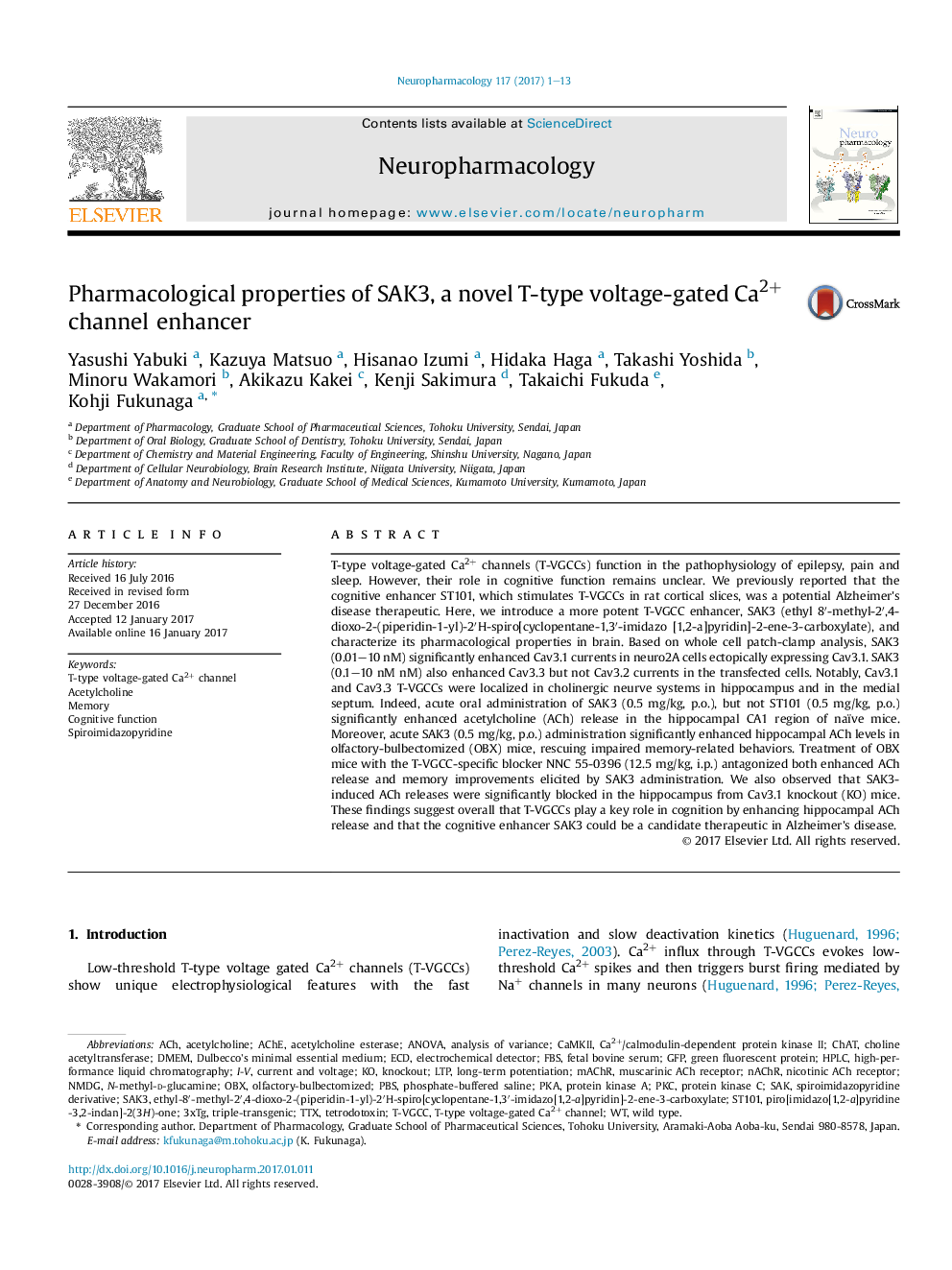| Article ID | Journal | Published Year | Pages | File Type |
|---|---|---|---|---|
| 5549049 | Neuropharmacology | 2017 | 13 Pages |
â¢SAK3 enhances Cav3.1 and Cav3.3 T-type Ca2+ channel currents.â¢SAK3 promotes ACh release in the hippocampus via enhancing T-type Ca2+ channel.â¢Acute SAK3 administration improves memory deficits in olfactory-bulbectomized mice.
T-type voltage-gated Ca2+ channels (T-VGCCs) function in the pathophysiology of epilepsy, pain and sleep. However, their role in cognitive function remains unclear. We previously reported that the cognitive enhancer ST101, which stimulates T-VGCCs in rat cortical slices, was a potential Alzheimer's disease therapeutic. Here, we introduce a more potent T-VGCC enhancer, SAK3 (ethyl 8â²-methyl-2â²,4-dioxo-2-(piperidin-1-yl)-2â²H-spiro[cyclopentane-1,3â²-imidazo [1,2-a]pyridin]-2-ene-3-carboxylate), and characterize its pharmacological properties in brain. Based on whole cell patch-clamp analysis, SAK3 (0.01-10Â nM) significantly enhanced Cav3.1 currents in neuro2A cells ectopically expressing Cav3.1. SAK3 (0.1-10Â nMÂ nM) also enhanced Cav3.3 but not Cav3.2 currents in the transfected cells. Notably, Cav3.1 and Cav3.3Â T-VGCCs were localized in cholinergic neurve systems in hippocampus and in the medial septum. Indeed, acute oral administration of SAK3 (0.5Â mg/kg, p.o.), but not ST101 (0.5Â mg/kg, p.o.) significantly enhanced acetylcholine (ACh) release in the hippocampal CA1 region of naïve mice. Moreover, acute SAK3 (0.5Â mg/kg, p.o.) administration significantly enhanced hippocampal ACh levels in olfactory-bulbectomized (OBX) mice, rescuing impaired memory-related behaviors. Treatment of OBX mice with the T-VGCC-specific blocker NNC 55-0396 (12.5Â mg/kg, i.p.) antagonized both enhanced ACh release and memory improvements elicited by SAK3 administration. We also observed that SAK3-induced ACh releases were significantly blocked in the hippocampus from Cav3.1 knockout (KO) mice. These findings suggest overall that T-VGCCs play a key role in cognition by enhancing hippocampal ACh release and that the cognitive enhancer SAK3 could be a candidate therapeutic in Alzheimer's disease.
